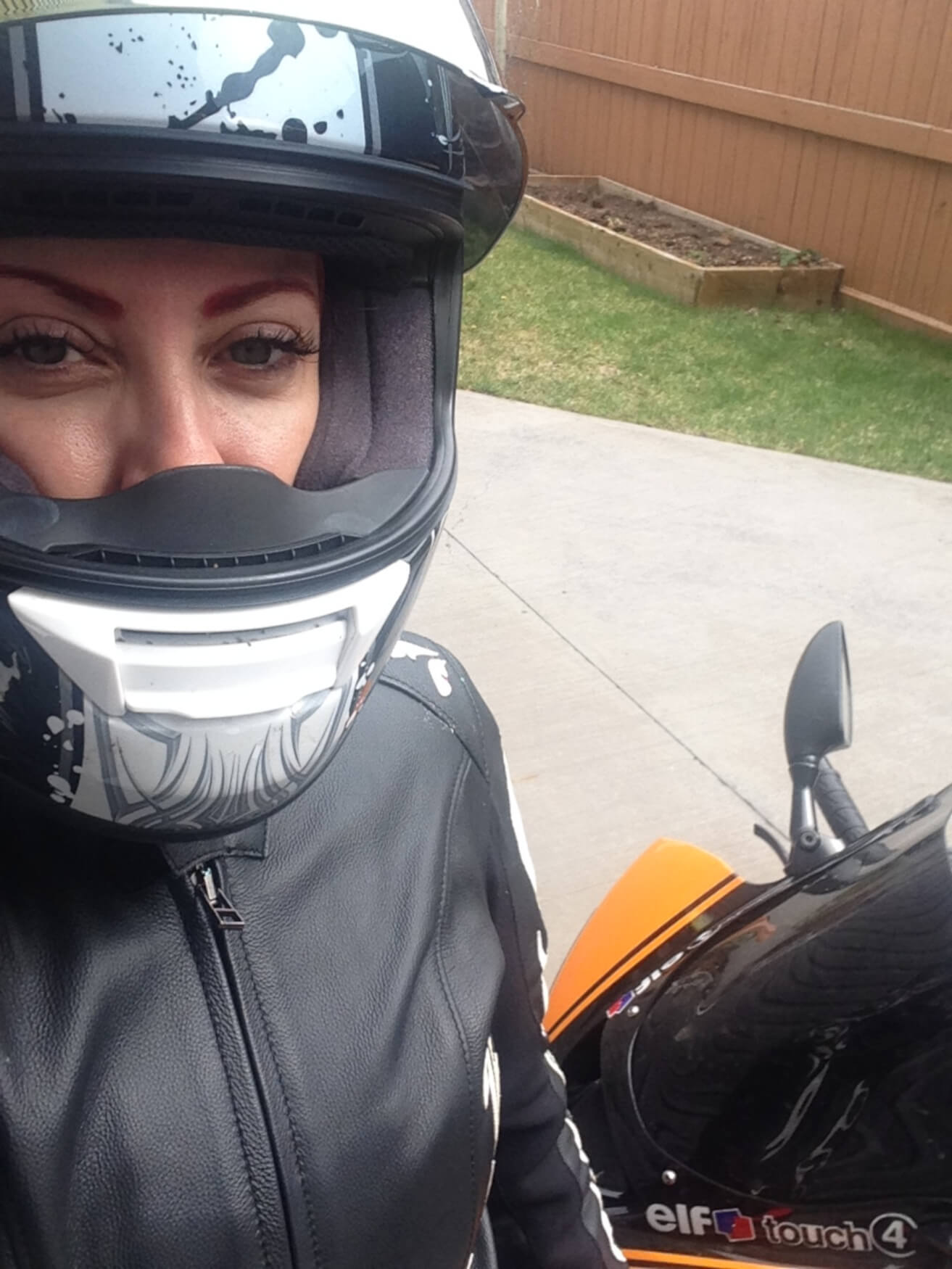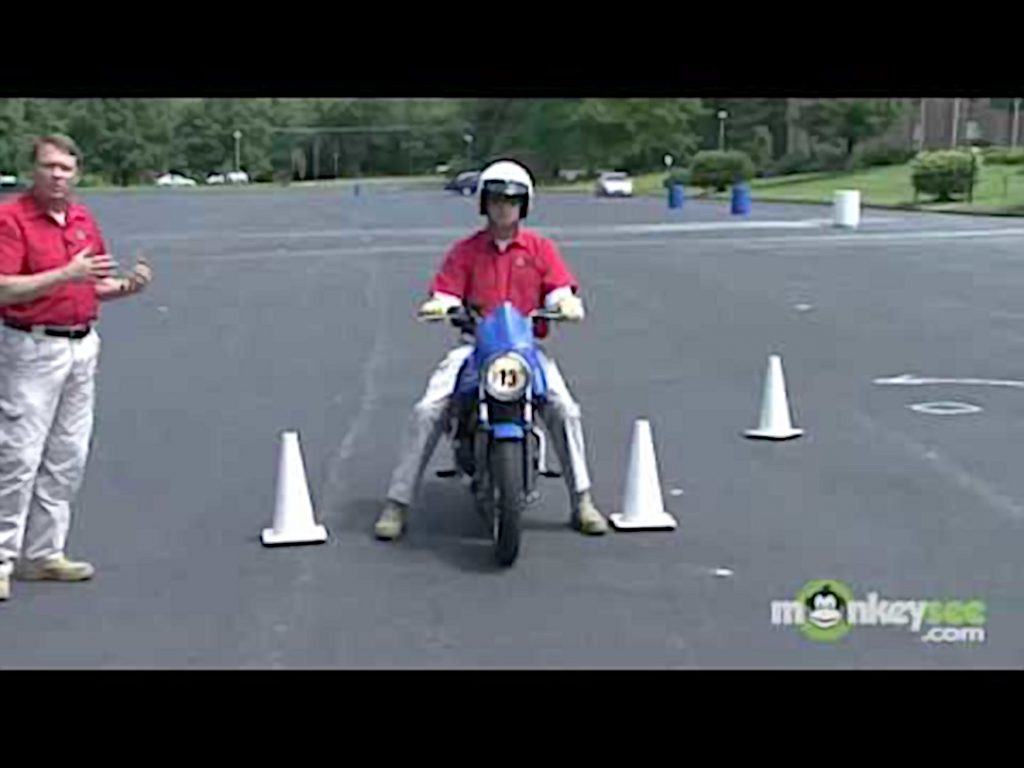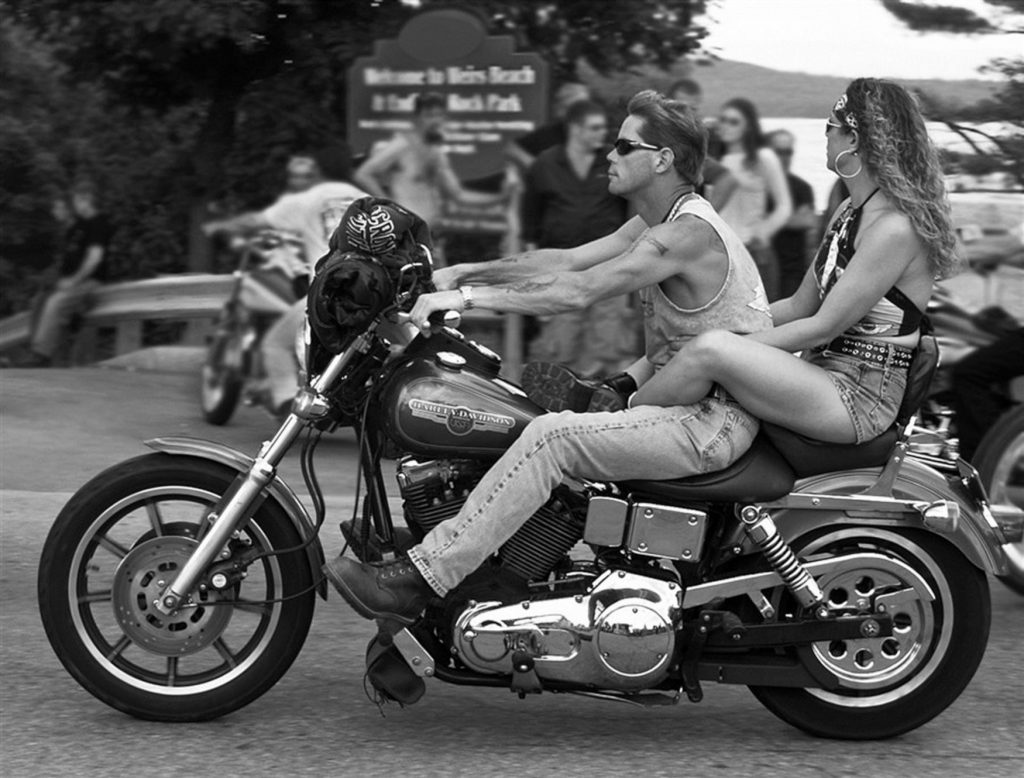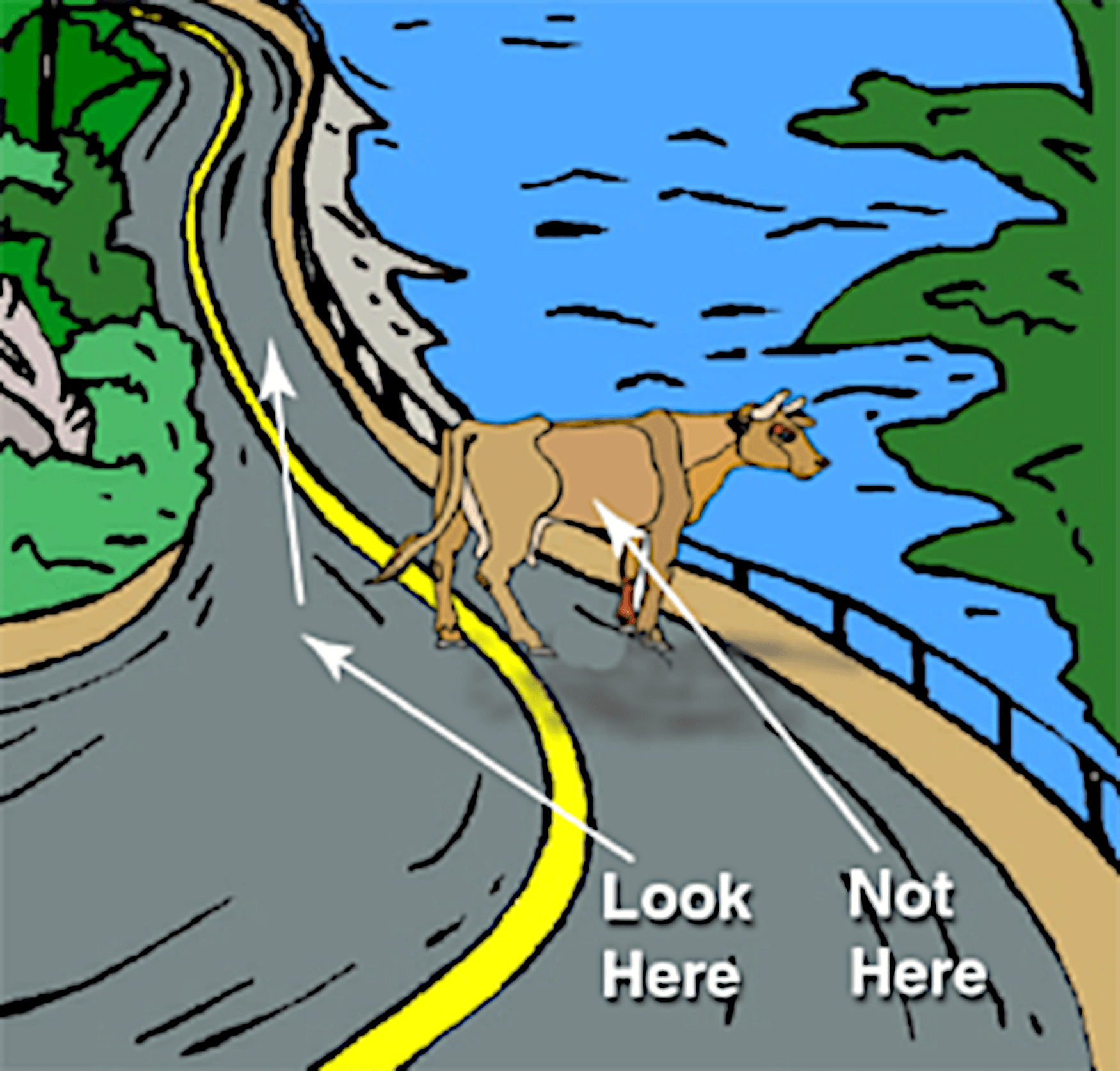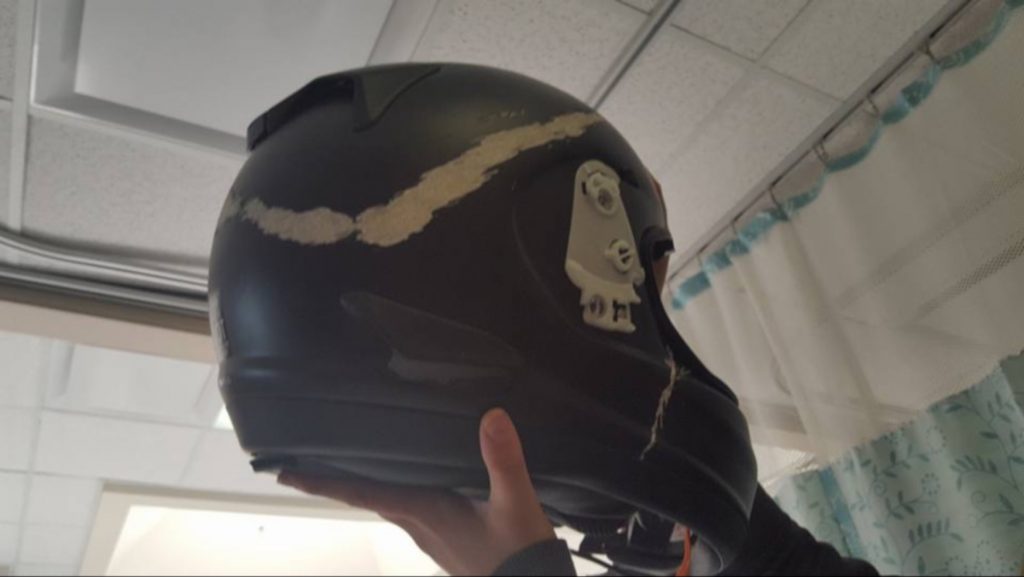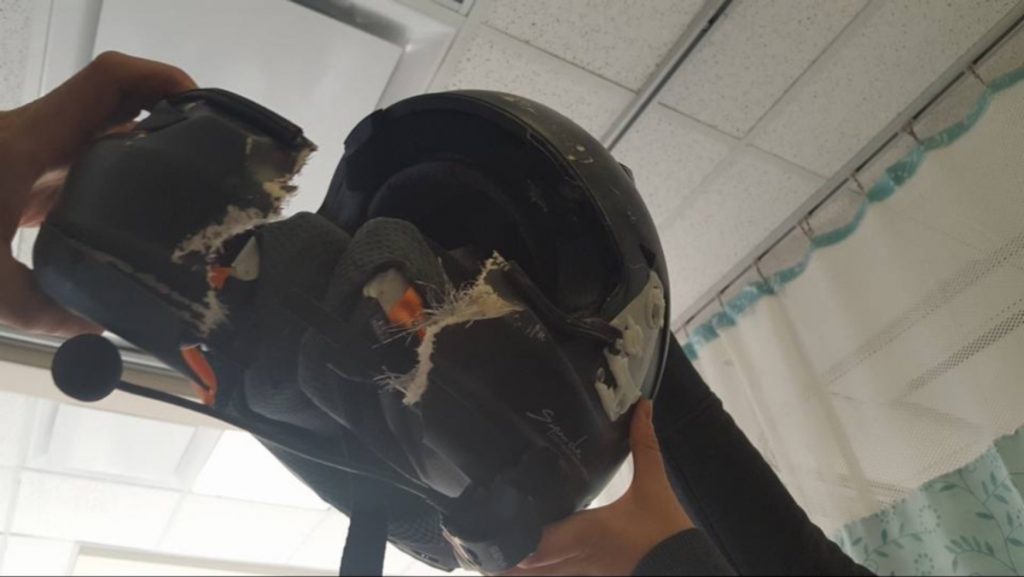Check the Basics Before You Ride
You would never take part in a marathon with your shoelaces untied, so what is the difference between that and not checking your bike before you ride? Not much really, leave it to chance and both ways, you are going down – it’s just a matter of when. It is very important to learn to not only check the basic things but also make sure to do a twice-yearly thorough check using the T-Clocs acronym. You can review that in this article about basic bike mechanics here.
Basic things to check at the very minimum would be:
- Gas – Never rely on the instrument gauge to tell you, best to always have a habit of checking visually to minimize the chance of having to call AAA or walk your bike down the highway
- Chain – Is it greased or loose? Do the sprockets look okay and are they worn or chipped?
- Tires – Check for pressure, cracks, punctures, or wear such as threads showing or below the wear bars
- Lights – Do signals, horn, or high-beam/low-beam work?
Lastly, perform a visual check for loose bolts and your oil level. For the oil level, the bike needs to be perfectly upright, so center stands, or having a friend around helps. For me, I usually balance the bike and have a firm grip on the opposite side of the seat so that it doesn’t fall away from me and keep the kickstand down for just in case it does fall.
The Simple Things
Levers
I’ve seen it argued on both sides, but there are a few habits I like to drill into my students as muscle memory so hopefully, it’s one less thing to think of and it becomes an automatic habit. What I’m referring to is hovering your hands over the levers, hanging your feet below the pegs or over the foot controls.
My rule for students is if you aren’t using it, hands back to full grip and toes on the pegs or away from the controls.
It’s human nature to suddenly grab the controls if a situation that occurs that is surprising or requires sudden reactions. The best thing to practice is quick transitions between use and not using the controls. If you hit a pothole or corner too hard and your feet are below the pegs or hovering over the shift lever and rear brake, that impact can cause you to both be shifting down and breaking into a skid before you know it.
Kickstand
The number one habit I like to instill is awareness of the kickstand. Making sure you put the kickstand down prior to getting off the bike, and getting on, the kickstand should be the last thing up before you start it.
There have been so many times I had an internal laugh when I worked in sales at a local motorcycle dealership. I would go over P.D.I. (pre-delivery inspection for those that aren’t familiar with dealer lingo), and go back into the shop only for the person to come running back in telling me I sold them a faulty bike. I’d go back with them, and get them to start it and the first thing I’d notice was that the kickstand was down.
There’s a switch on most bikes that either doesn’t allow the bike to start or will allow it to start in neutral but kill the engine once a gear is selected if the kickstand is down. It’s a brilliant safety system and a simple fix to a bike that won’t run. That would be the first thing to check anyway. This and having the habit of kickstand down before you swing your leg off the bike will save you from an embarrassing gas station incident of the bike falling over.
Attention
The last little thing is to avoid visually memorizing where everything is, but rather physically and mentally make a note while building muscle memory. This way your eyes are focused on the most important – what’s ahead and around you.
Duck Walking
This is probably something that’s my biggest peeve in students is seeing them walk the bike while sitting on it rather than use their slow-motion riding skills or get off and adjust the bikes position.
My main reason is because of the sudden change of traction – such as gravel on the pavement, causes your foot to slip and next thing you know, you are crawling out from under your bike. Best not to get into that habit or at least make sure that you are extremely careful, aware, and know that’s a possibility if you do choose to duck walk. To me, it just shows a difference in control and not controlling your bike.
The screenshot above is taken from Samurai291’s video on YouTube – I do not recommend this and not sure why they are teaching “power walking”.
Taking Command of the Road
Space Cushions
There’s nothing more important than arriving home alive. Creating a space cushion is one of my tools to use that can help you accomplish that. What I mean by a space cushion is that with the area in front of you, there’s plenty of room to react to changing situations and be able to brake without slamming them on.
Bikes brake faster than cars and I find rider’s reaction times are better generally too (although remember there are exceptions). We are exposed and more reactive with a bigger chance of getting hurt from not being in the safety of a metal cage (vehicle).
If the person behind you is tailgating you, best things to do would either be to change lanes or create a bigger cushion in front to react. I’d change over lanes and let the impatient driver pass rather than creating a potential road rage situation because if it’s cars vs bikes, then cars would usually win in that battle.
Know When to Stand Your Ground & When to Give Way
In any accidents, this is controversial to say but 99% of the time it’s on all parties involved making errors in judgment that lead to accidents. Whether it’s momentary inattention, distracted driving, not maintaining their vehicles, changes in weather but no change in safely adjusting your driving accordingly – the list can be endless. Sadly, I can’t even count how many times just this summer I’ve had close calls with people driving with their heads in their phones.
Staying alive is key, and sometimes if the other person is not following the rules, it’s best to come home alive than be right about something. Being alert, prepared and not complacent are the best way to be while riding on the road – even if it’s quiet be prepared to react to surprises the best way possible.
Prepare for the Worst, Hope for the Best
Exit Plans
With what to do in any given situation, it is better to have a plan than to just react. Keeping an eye on where vehicles and other moving and solid objects are is important and being prepared to react to unknown situations is better. Picking where you stop can make a difference in whether you get squished between two vehicles or being able to get around.
When stopping choose to be the most visible and the best situation to get out of there if things take a turn for the worst. Shoulders, versus ditches, same thing – always make sure if you need to dodge something, do it in the safest way possible. You can check out my article on emergency maneuvers here.
Stay in Gear if Possible
We’ve all probably done it, I know I’ve been guilty too of putting the bike in neutral while waiting at lights – but I never said it was smart.
When you do this, you are now adding an extra couple of steps to getting out of a situation rather than look, release the clutch/brakes and rolling on the throttle. Instead, grabbing the clutch, changing gears, and then releasing the clutch and adding throttle. Right there, that’s an extra 2 steps not to mention fumbling when panicked. Why put yourself at more risk than you should?
Keep a Calm Mind at All Costs
Breathe & Deal With It – Don’t Freeze
This was something I was taught when I was little – learning off-road riding to help prepare myself for any situation I encounter. To hesitate will cause a crash. To panic will not allow your natural instincts to kick in, freezes you and puts you in a precarious situation.
Calm, clear minds will help get you out of dicey situations because regardless of what’s happening, it’s still happening and you can’t necessarily change it, but you can change how you react to it. Dealing with things as they come and not overthinking a situation or letting fear take over as that’s a primal instinct that doesn’t help at all in motorcycle riding. That being said, being fearless and taking stupid risks is no better.
Don’t be a S.Q.U.I.D
Perfect Example of a S.Q.U.I.D.
That stands for so quick until I die. We’ve probably all seen those people, showing off to their buddies for attention or bragging rights and then something goes horribly wrong. YouTube is filled with those videos.
Ride with the skills you have and build on those little by little. Awareness of your weaknesses and focus on working on those is more important and better to show off with rather than going into something with no brains and no skills.
If you don’t know how to get yourself out of the worst case scenario at the time, you’ve probably pushed yourself too far. Learn the roads/curves before going full out, including watching for hazards, conditions, etc. and learn what your bike is capable of. I’ve seen people go out and buy an R1 without any riding experience just to crash it and cause our insurance premiums to rise. That’s definitely nothing to brag about – skill building is.
Blind Spots & Tracking: Places on the Road to Avoid
Blind Spots
It’s too often that I heard about accidents where the driver said they just didn’t see the rider. It happened to a friend on a highway and he was lucky to get away with just a broken wrist when a trailer swung into his lane.
Was it the trucks fault? Yes, but it could’ve also been prevented by creating that space to brake or just keeping in the visible spots and being ready to react. If you can’t see the driver’s eyes in the mirrors or beside you, it’s very likely they can’t see you.
Tracking
I’m not sure why, but I don’t think enough is taught about tracking. This means where the front of a vehicle needs to turn wider than the rear to make a turn and applies to motorcycles too. It’s this awareness that should translate to the road and keeping out of large vehicle and vehicle with trailers turning areas.
A semi with a trailer might keep in the left of a lane to take a right-hand turn, so never ever stay beside the trailer. Be in front or behind, but you don’t want to be the one run over because of a mistake like that.
Practice
If you’re in the mindset that “I’ve just passed my motorcycle exam” and that’s the only real effort I’ll have to do because now everything else will just come to me – give your head a shake.
Doing that is just asking for trouble as without practice and constant skill practice – we get rusty, forget things, our reaction times slow and we become worse riders after time. I’ve had students who have ridden for a few decades come to our course thinking it’s a breeze and they’re only doing it to please their other half because their kid wants to ride too. Talk about a humbling experience.
Anyone can lock a throttle open and not even be on the bike and it will ride straight until it hits something or runs out of the road. It’s the physical communication between the rider and the bike that is built and needs to be maintained. Even after a winter without riding, my skills aren’t at the same level as they were at the end of the last riding season. So take it easy and go to a parking lot to practice slow motion skills if you need.
Technology & Its Downfall
We are too reliant on technology now, compared to a few decades ago. Yes, the advances made in ABS, instruments and onboard computers are amazing and yes, vehicles can drive themselves.
That being said, I have a saying that it’s not a matter of if – but when it fails. If you handicap yourself on being completely reliant on your ABS for example and slamming on whatever brakes and not knowing what brake to use in what situation – what would you do if it failed? Same with neutral lights, sensors and anything else really.
This is why it’s important to also learn about the basics so that if something does happen, you know how to react without something telling you what to do; and you are better equipped to react and deal with situations as they arise.
Things Far & Near
Object Fixation
Image via iMotorbike
This is what causes a lot of accidents. Looking at what you are headed for, even though that’s not where you want to go, or looking through and beyond a curve versus the ground in front. Object fixation can be deadly and learning to trust yourself and your bike and turning your head and looking at the direction you want to travel is paramount.
So many people for some reason fight turning their heads and not only does it make turning harder but can create panic. Loss of momentum or sudden change in traction are the things that will make a bike fall over, not the simple motion of turning your head and chin to the direction you want to go.
Again, practicing skills off the road where there’s more going on might help with any issues of object fixation. Something to always remember. You can read about techniques about going slower here and faster here.
Horizon & Looking Ahead
Lots of times I’d be riding in this road that’s completely empty, and free of traffic to take an off-ramp to end up in the wall to wall traffic, going from 60 to 0 in no time at all. Sudden changes happen and looking ahead as far as possible will do two things.
- It tends to slow down peripheral movement and change the perception of speed.
- It gives you more time to see and react to changes ahead.
Mental Notes & Keeping Sharp
How many times have you commuted home, got lost in thought and looked up to think – wow, I can’t remember anything that happened between Center Street and 100th Ave?! This is a type of complacency that we never want to happen on a motorcycle. Changing up routes or even playing mental games of this car is here, that truck is there, that dog is running – will keep you a little more alert and ready to react to anything that might come up.
A.T.T.G.A.T. vs Squidwear
Shorts and sandals – great on a beach, not so much on a bike. To each their own, but the consequence is too great to risk it. If the options are needing a shower from sweating versus not having any more skin, I think I’d be happy with taking the extra shower.
A.T.T.G.A.T. means, All The Gear, All The Time. Even for a 5-minute ride as especially within 3 miles of your home, you’re more statistically likely to be in an accident. I call shorts and sandals squid wear for one reason, it goes hand in hand with the S.Q.U.I.D. mentality.
A Tale for the Road
We are so lucky to have a lady by the name of Brittany Morrow writing with our sites and she is a huge advocate of riding with A.T.T.G.A.T. This is because she is one of the very lucky few to have survived coming off a bike at high speeds and has a story that is both shocking and awe-worthy about her fight to survive and what she had experienced.
I have to warn everyone – this story is not for the faint of heart as it is a very graphic story. Despite that, it is something I feel everyone should read about and understand. It might just change your mindset about forgoing your gloves, jacket, helmet, etc. – all the gear. You’ve been warned.
Read about Brittany’s story here.
Safety Head First
This is the after of a friend’s Arai helmet after crashing just 5 minutes away from his home. He survived with just a few scratches, but you could imagine what would’ve happened to his face without it.
Ride safe and remember, rubber side down!

